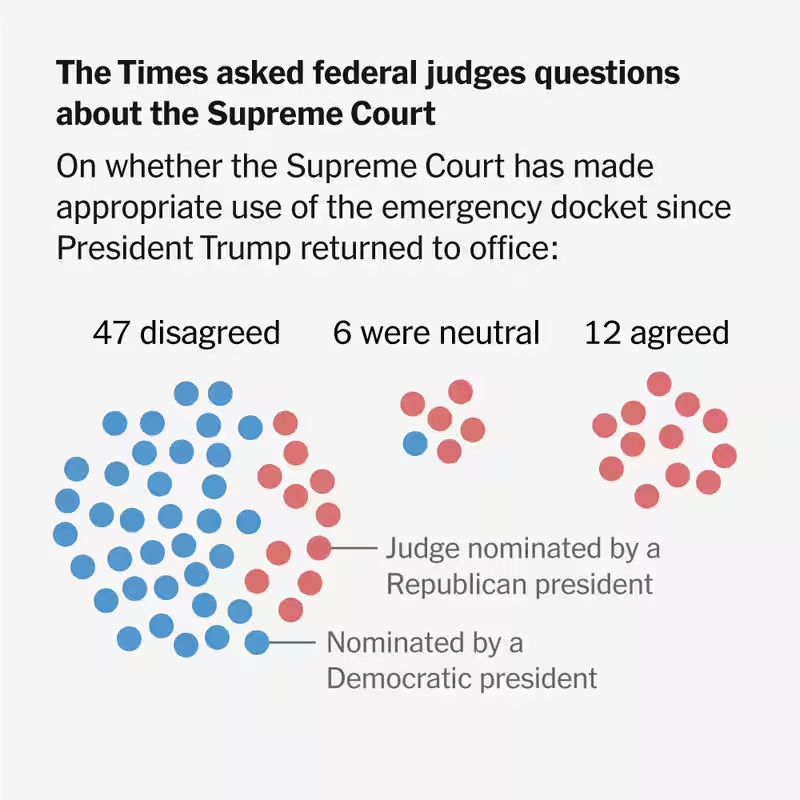More than three dozen federal judges are sounding the alarm over what they describe as a growing judicial crisis—one fueled not by courtroom drama or political protests, but by a series of brief, unexplained rulings from the nation’s highest court.
What’s Happening on the Supreme Court’s Emergency Docket?
Since former President Donald Trump returned to office, the Supreme Court has increasingly relied on its so-called “shadow docket”—a set of emergency orders issued with little to no explanation—to decide whether controversial Trump administration policies should remain in effect while lower courts deliberate.
These rulings may be labeled “temporary,” but their real-world impact has been anything but fleeting. Thanks to these emergency orders, the administration has been able to:
- Deport tens of thousands of immigrants
- Discharge transgender service members from the military
- Terminate thousands of federal employees
- Slash billions in federal spending
Yet, according to a confidential survey by The New York Times, many lower-court judges feel blindsided by these rulings—left without clear legal reasoning or guidance on how to proceed in their own courtrooms.
Judges Speak Out—Anonymously
Sixty-five federal judges responded to a Times questionnaire, with 47 expressing serious concerns about how the Supreme Court has handled its emergency docket under the Trump administration. Most spoke on condition of anonymity due to ethical rules restricting public commentary by sitting judges.
One key finding? A staggering 48 judges disagreed with the statement: “Lower-court judges have sufficient guidance from the Supreme Court about how to apply emergency docket orders.” Only 12 agreed.
Public Trust at Risk
Even more troubling: 42 judges believe the Supreme Court’s use of the shadow docket since Trump’s return has harmed public perception of the judiciary. Just two said it improved trust; ten saw no effect.
Why the “Shadow Docket” Matters
Traditionally, the Supreme Court’s emergency docket was used for time-sensitive but narrow issues—like halting an execution or preserving evidence. But in recent years, especially during Trump’s second term, it’s become a powerful tool to shape national policy without full briefing, oral arguments, or published opinions.
Critics argue this undermines transparency, accountability, and the rule of law. As one judge told The Times: “It’s like flying blind. We’re supposed to follow precedent, but there’s no precedent here—just a one-line order.”
Table: Judicial Sentiment on the Supreme Court’s Emergency Orders
| Question | Agree | Neutral | Disagree |
|---|---|---|---|
| Lower-court judges have sufficient guidance from the Supreme Court about how to apply emergency docket orders. | 12 | 5 | 48 |
| Has the Supreme Court’s use of the emergency docket harmed public perception of the judiciary? | 2 (improved) | 10 (no effect) | 42 (caused harm) |
What’s Next for the Judiciary?
Legal scholars and judicial ethics experts warn that if the Supreme Court continues to issue sweeping policy decisions through opaque emergency orders, it risks eroding its own legitimacy—and the public’s faith in an independent judiciary.
[INTERNAL_LINK:judicial-crisis] This isn’t just a legal technicality; it’s a constitutional flashpoint. With the 2026 midterms looming and more Trump-era policies headed for court, the pressure on the Supreme Court to restore clarity—and transparency—is mounting.




